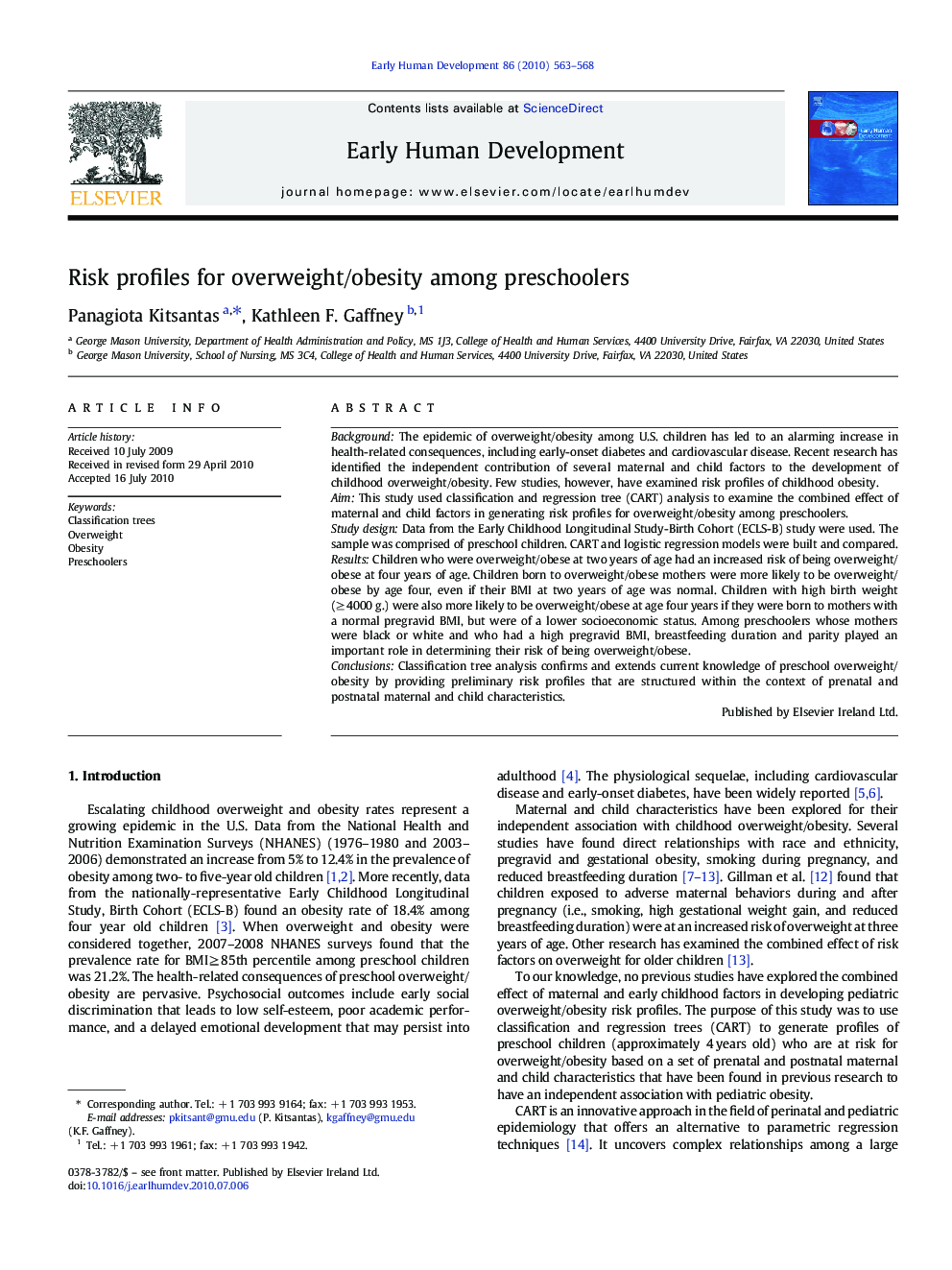| Article ID | Journal | Published Year | Pages | File Type |
|---|---|---|---|---|
| 6172223 | Early Human Development | 2010 | 6 Pages |
BackgroundThe epidemic of overweight/obesity among U.S. children has led to an alarming increase in health-related consequences, including early-onset diabetes and cardiovascular disease. Recent research has identified the independent contribution of several maternal and child factors to the development of childhood overweight/obesity. Few studies, however, have examined risk profiles of childhood obesity.AimThis study used classification and regression tree (CART) analysis to examine the combined effect of maternal and child factors in generating risk profiles for overweight/obesity among preschoolers.Study designData from the Early Childhood Longitudinal Study-Birth Cohort (ECLS-B) study were used. The sample was comprised of preschool children. CART and logistic regression models were built and compared.ResultsChildren who were overweight/obese at two years of age had an increased risk of being overweight/obese at four years of age. Children born to overweight/obese mothers were more likely to be overweight/obese by age four, even if their BMI at two years of age was normal. Children with high birth weight (â¥Â 4000 g.) were also more likely to be overweight/obese at age four years if they were born to mothers with a normal pregravid BMI, but were of a lower socioeconomic status. Among preschoolers whose mothers were black or white and who had a high pregravid BMI, breastfeeding duration and parity played an important role in determining their risk of being overweight/obese.ConclusionsClassification tree analysis confirms and extends current knowledge of preschool overweight/obesity by providing preliminary risk profiles that are structured within the context of prenatal and postnatal maternal and child characteristics.
